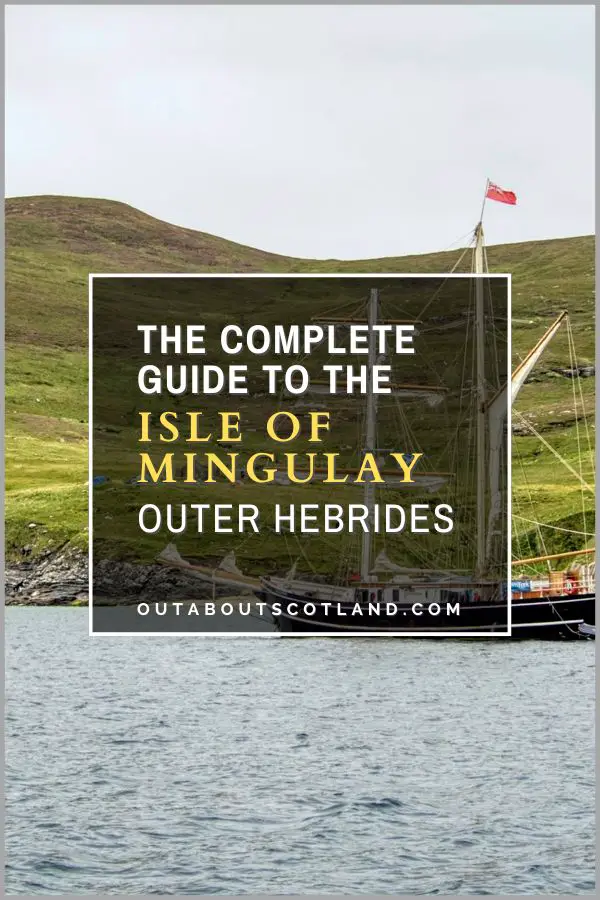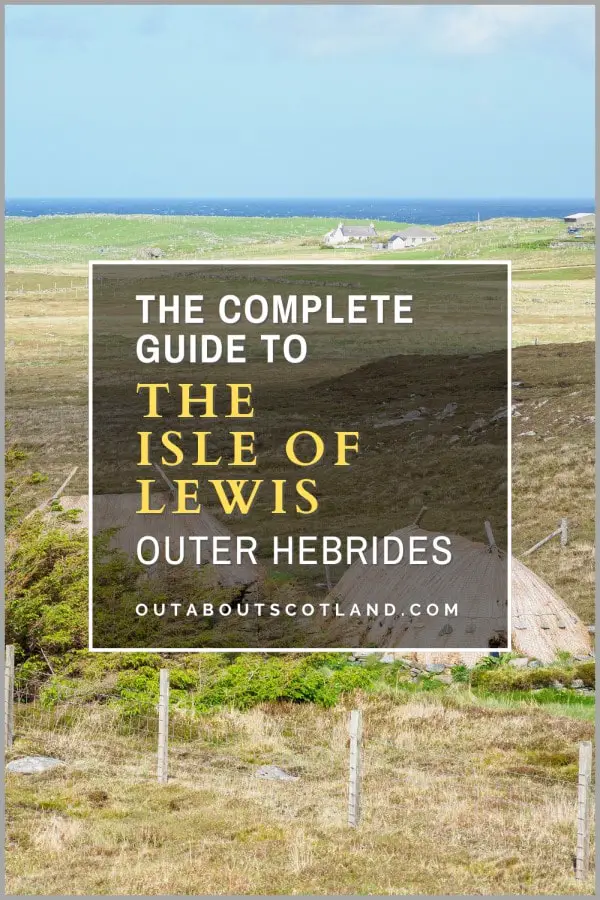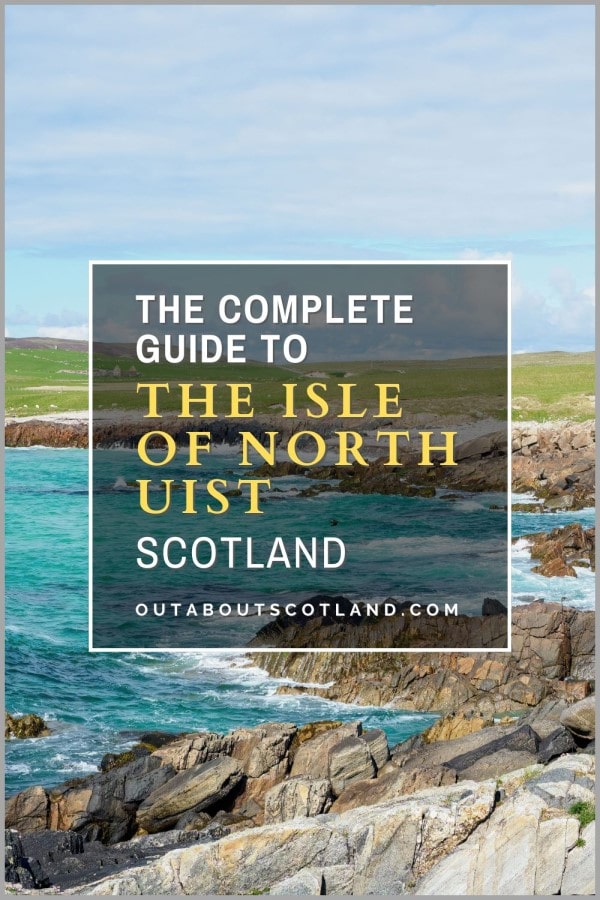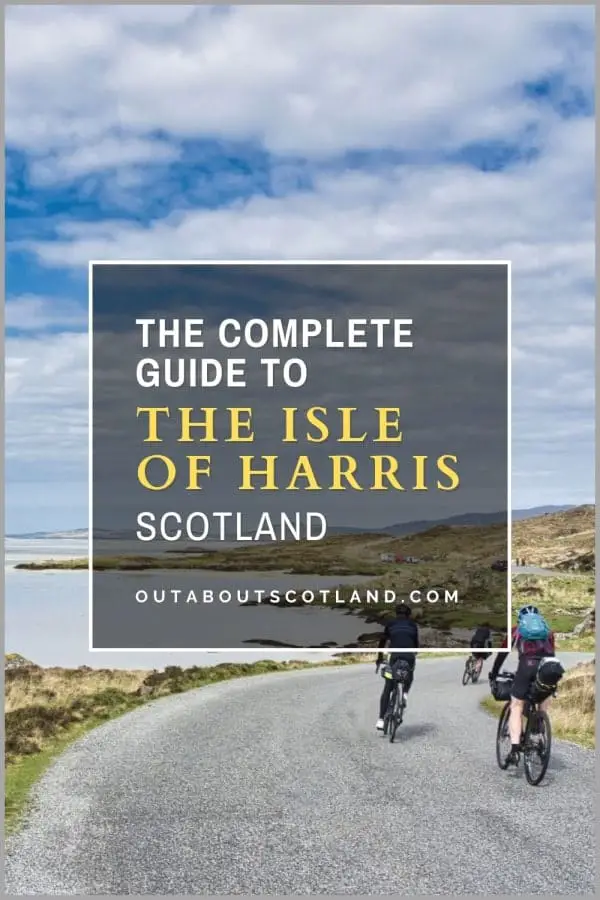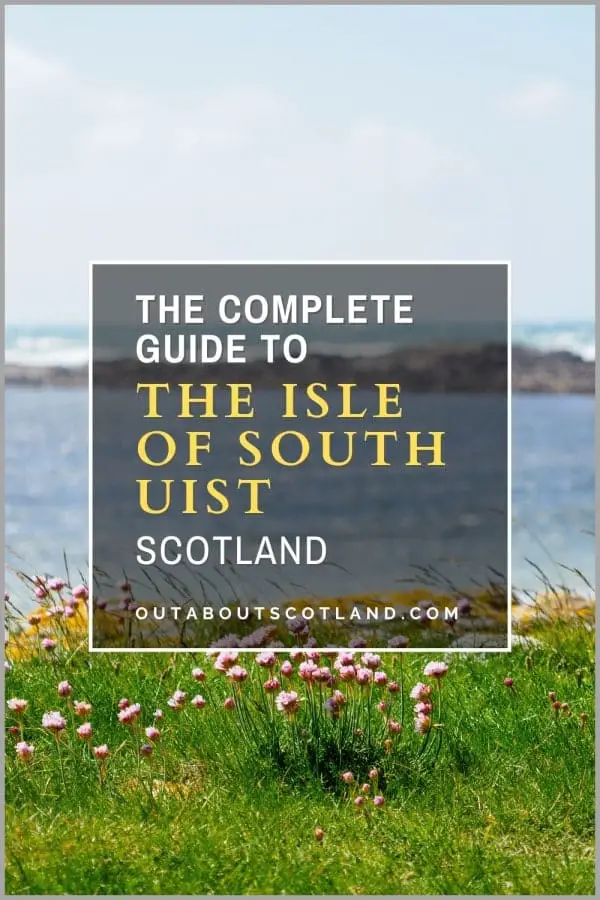With the recent increase in staycations, many Britons are flocking to the islands of the Hebrides for their summer holidays, especially those islands that are home to stunning beaches such as Luskentyre on Harris. It’s undeniable that visiting Scotland’s islands in summer can be just as idyllic as travelling anywhere overseas, and there’s the added bonus that visitors will save a packet on travel costs.
Many of these islands are pretty much untouched by tourists, yet they boast some of the country’s most spectacular scenery as well as its most abundant wildlife.
In this article, you’ll find a selection of the best Scottish islands to visit in summer that are all guaranteed to offer visitors a wonderful summer break, whether they have a preference for lazing on white sand beaches or enjoying adrenaline-fueled watersports.
Isle of Skye
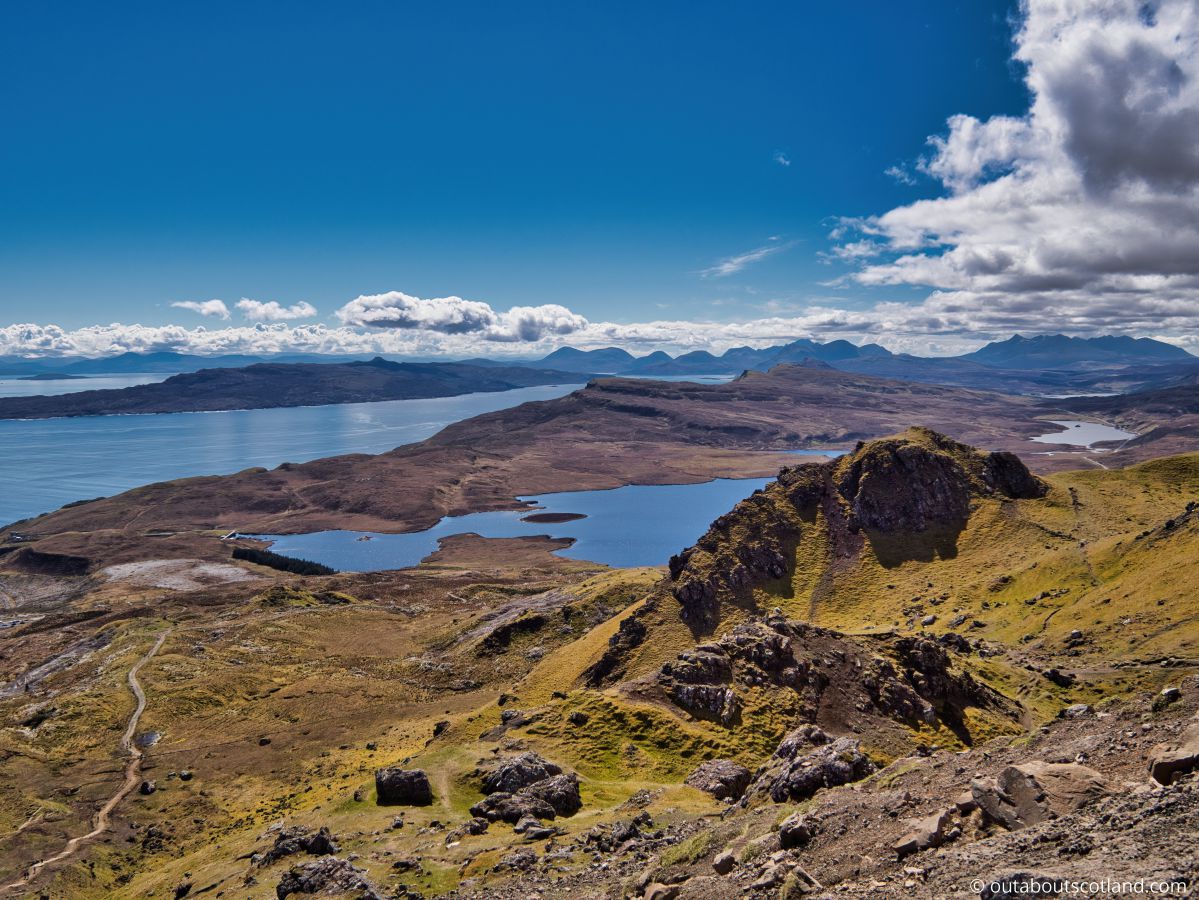
Out About Scotland Guide: Isle of Skye
The Isle of Skye, located on the west coast of Scotland in the Inner Hebrides, is a popular tourist destination well-known for its breathtaking landscapes and diverse wildlife.
The island covers an area of 639 square miles and has a permanent population of 10,000 people, and it’s widely regarded as one of the best Scottish islands to live on as well as one of the most beautiful islands in the entire United Kingdom. In addition, Skye is by far the easiest Scottish island to get to thanks to a bridge connecting it to the mainland, which is one of the reasons why it welcomes over half a million visitors each and every year.
Access to the island is relatively easy, with two entry points: Kyleakin via the Skye Bridge from the mainland, and Armadale, which has regular ferries from Mallaig on the mainland. A car is necessary to fully explore Skye, as it’s rather sizeable at 48 miles long and 22 miles wide at its widest points, though many areas are not accessible by vehicle, so you will have to walk to experience the remotest parts.
There are several villages on the island, including Portree, Dunvegan, Edinbane, Uig, and Staffin in the north, and Broadford, Armadale, Carbost, Elgol, and Kyleakin in the south, most of which offer summer rental accommodation.
There are lots of ways you can visit the Isle of Skye, but for sheer convenience, you won’t go far wrong with the Rabbie’s 3-day mini-coach tour, which stops at all the major tourist attractions, from Eilean Donan Castle to Toraing and the Old Man of Storr, as well as a couple of must-sees, including the iconic Loch Ness.
To see more details about this 3-day small-group tour of the Isle of Skye, visit the Rabbie’s website.
Isle of Mull
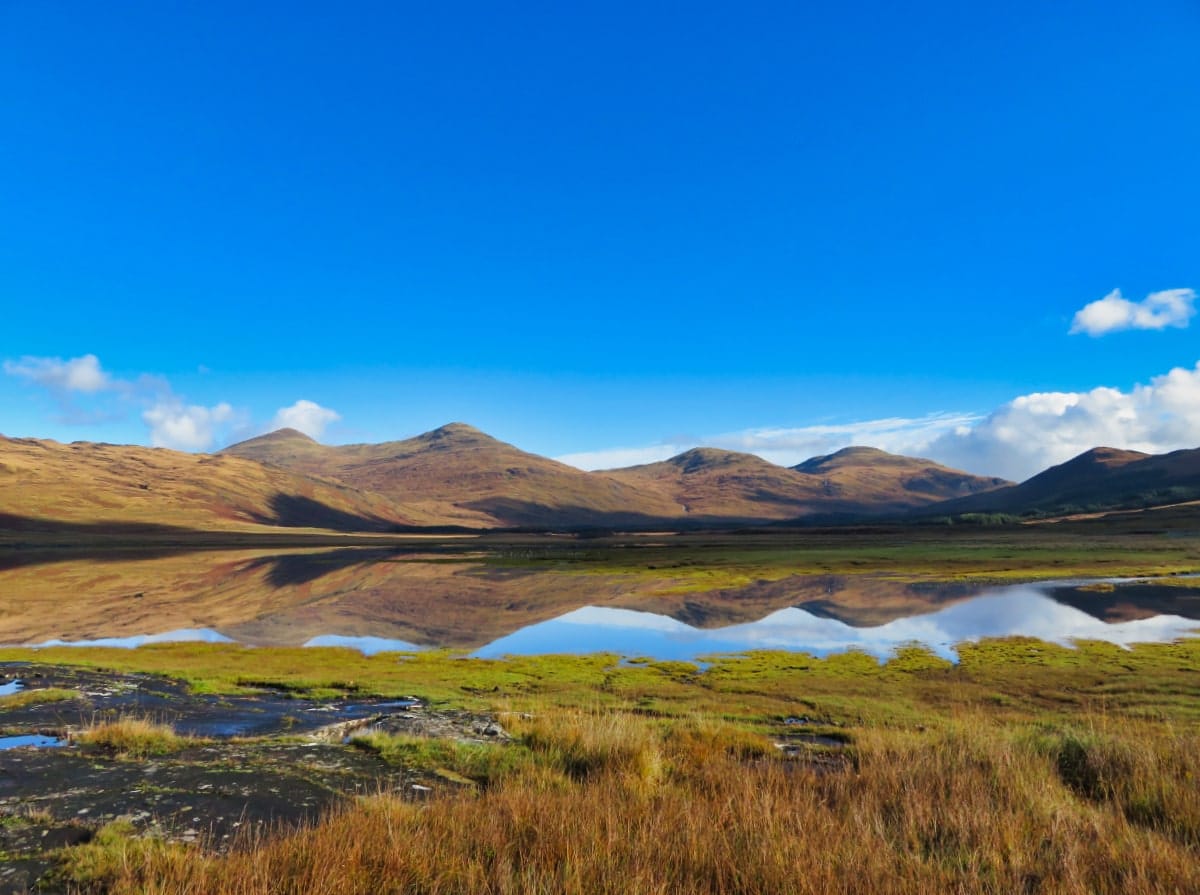
Out About Scotland Guide: Isle of Mull
The Inner Hebridean Isle of Mull is a top destination for nature enthusiasts and outdoor adventurers alike. It’s the fourth-largest island in Britain and boasts some of the cleanest beaches and the most abundant wildlife in Scotland.
Located off the coast of Oban, Mull is easily accessible by ferry and is highly regarded for its well-managed tourism. The terrain of the island is generally flat around the coastline, but the interior is much hillier and is ideal for exploring on foot.
Hiking the mountain peaks of Mull (Ben More is a must-do) is an incredible experience, but there are plenty of other activities to enjoy if you’d rather avoid hill climbs.
Highlights include visiting the town of Tobermory, exploring the Isle of Iona and Iona Abbey, walking to Carsaig Arches, and seeing the dramatic Duart Castle. Tobermory is a charming coastal village known for its row of colourful houses and beautiful coastal setting. Ben More is the highest peak on the island and offers breathtaking panoramic views from its summit.
To make the most of a visit to Mull, you really need to know where to go and what to see—something that isn’t easy for first-time visitors. With that in mind, you might like to book a tour with an experienced guide who’ll drive you to all the highlights while telling you stories about the landscape and the history of this stunning island.
The Rabbie’s Mull and Iona tour starts in Glasgow (just 1 hour from Edinburgh) and heads through Loch Lomond National Park before hopping over to Mull via the historic town of Oban. You’ll then see Iona Abbey, Fingal’s Cave, and Tobermory—absolute must-dos for any visitor to Mull.
For more information, take a look at the Rabbie’s Mull and Iona tour page.
Isle of Islay
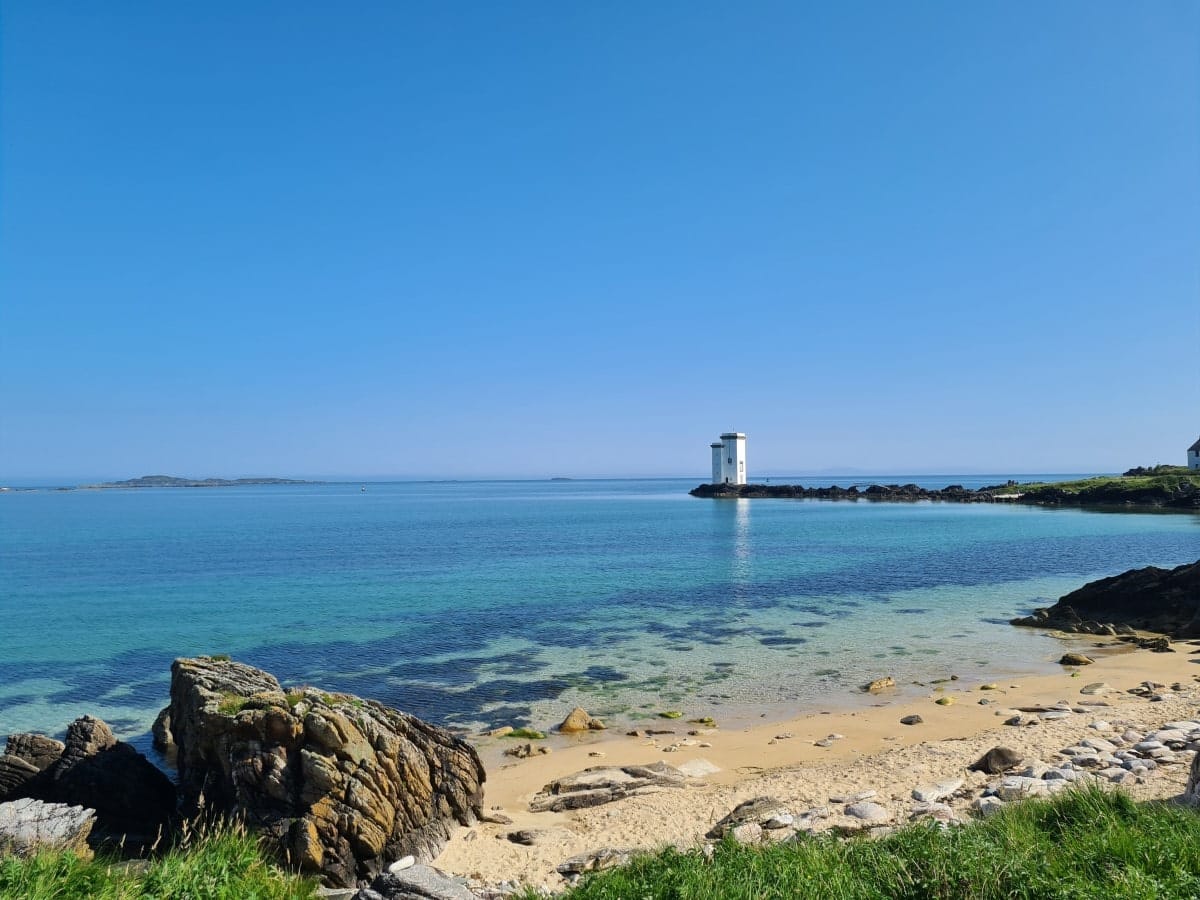
Out About Scotland Guide: Isle of Islay
Islay, also known as “The Queen of the Hebrides,” is a Scottish island that’s home to over 3,000 people and is famous for its nine working distilleries that produce some of Scotland’s finest whisky. The island is known for its beautiful beaches and woodland, as well as its superb cycle routes and walking trails.
Covering 239 square miles, Islay has plenty of open space to explore,which is the main reason why it’s so popular with birdwatchers and nature lovers, as well as walkers and cyclists. It’s also home to the pretty villages of Bowmore, Port Charlotte, Port Askaig, and Port Ellen, which are named after their respective distilleries.
Bowmore, in particular, is worth visiting for its historic distillery, which has a tasting room overlooking Loch Indaal. It’s by far the largest village on Islay, and it has the majority of shops on the island.
The east coast of Islay is especially attractive due to its dramatic coastline, while the south coast is heavily wooded and offers jaw-dropping views of Claggain Bay and the Oa Peninsula.
To really make the most of a trip to Islay, you need to know exactly where to go and what to see, which is where Rabbie’s 4-day Islay & the Whisky Coast tour comes into its own.
Starting in Edinburgh, the expert driver will take you through the Scottish Highlands to Oban, the ‘Seafood Capital of Scotland’, before hopping on a ferry to Islay to see its beautiful rugged coastline and enjoy a wee dram or two at iconic distilleries such as Bruichladdich, Ardbeg, Laphroaig, and Lagavulin.
To make a booking or to find out more about the tour, visit the Islay & Whisky Coast tour page on the Rabbie’s website.
Isle of Tiree
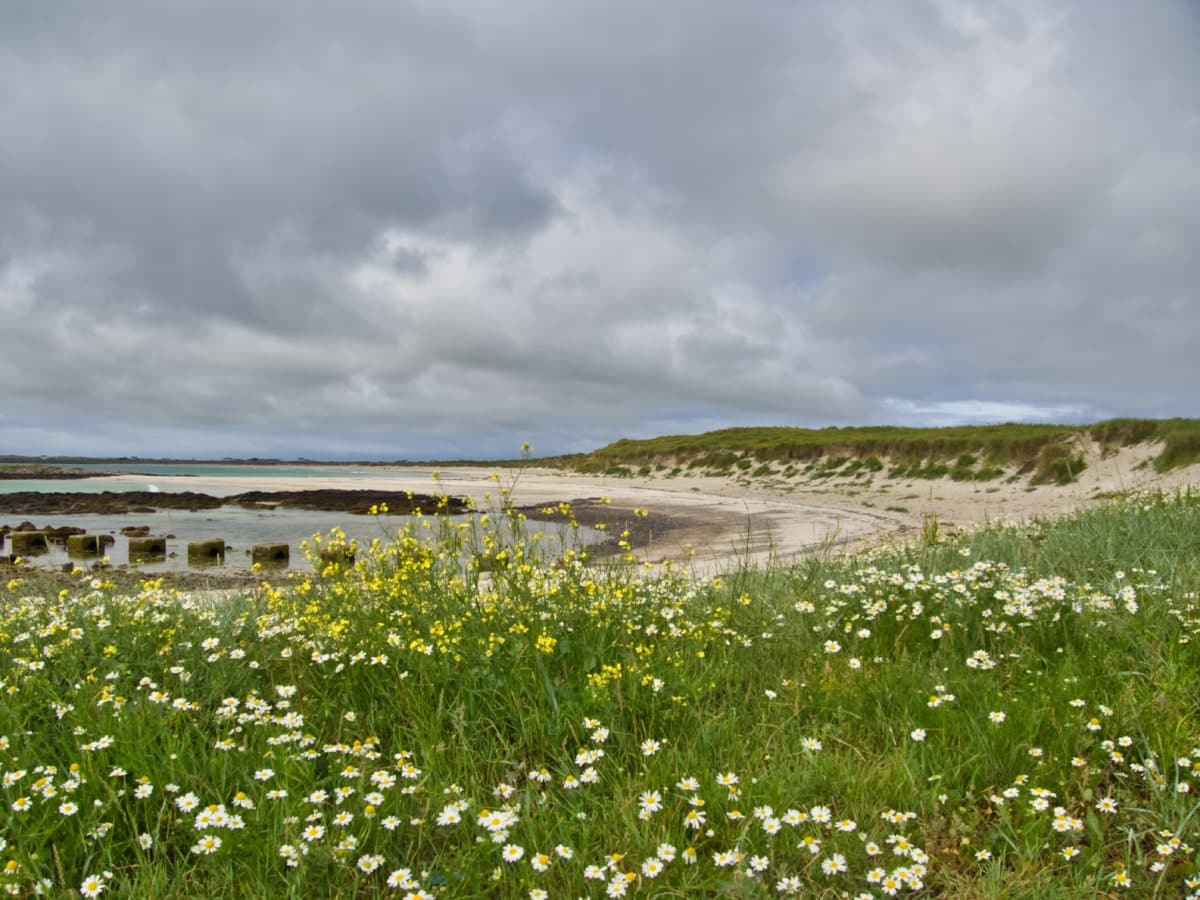
Out About Scotland Guide: Isle of Tiree
Tiree is a small but beautiful island in the Inner Hebrides, known for its sandy beaches and crystal-clear waters. It has a permanent population of around 650 people, but its numbers swell greatly in the summer months.
The island experiences a high number of sunshine hours (its nickname is ‘the Hawaii of the North’) in the late spring and early summer, though strong winds can usually be felt throughout the year. Tiree is home to a number of heritage centres that showcase its ancient history, but it also hosts modern events such as the Tiree Music Festival and the Tiree Wave Classic surf contest.
The island offers lots of activities for all ages, and despite its popularity with tourists, it remains relatively uncrowded and has a very chilled-out atmosphere. Though small, Tiree is (in my opinion) the best island to enjoy golden sand beaches, which is why you’ll find an entire article dedicated to them here.
Isle of Arran
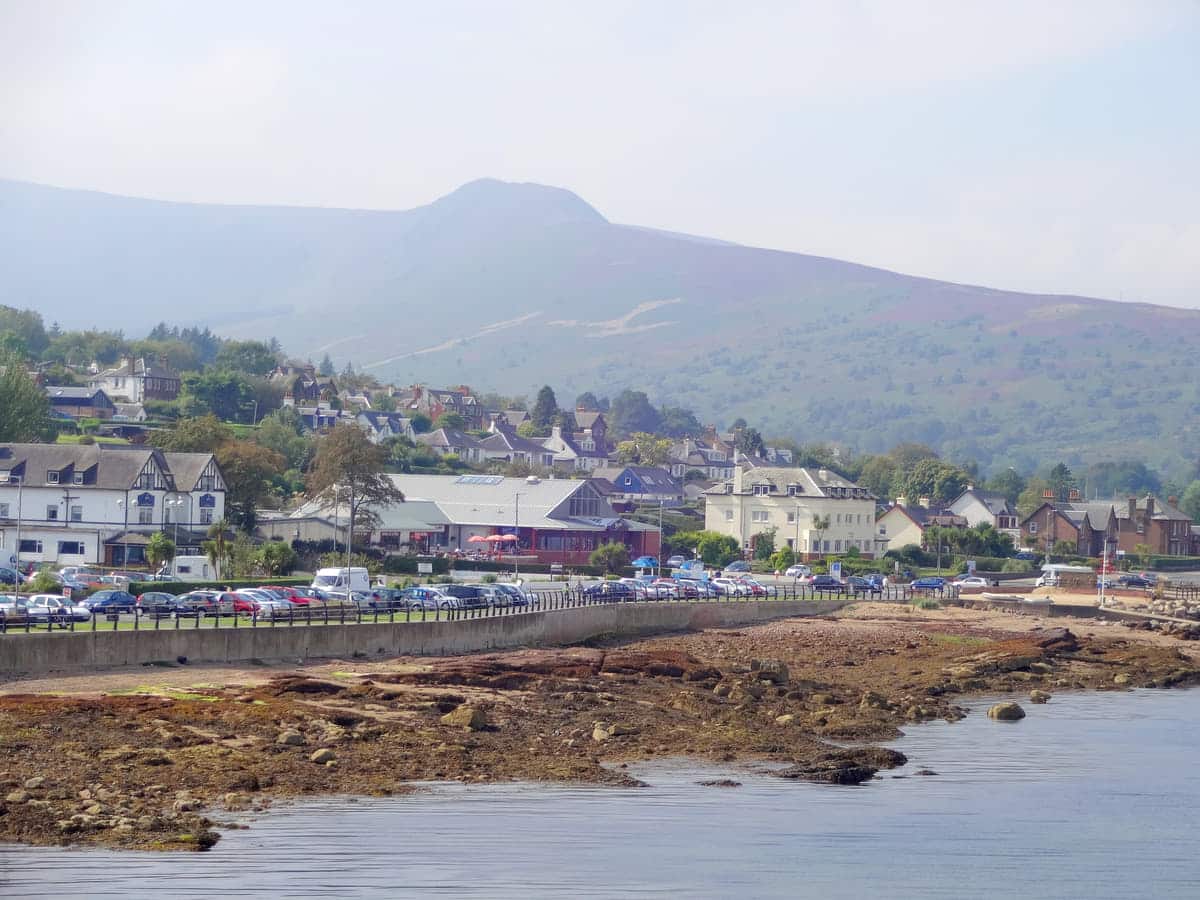
Out About Scotland Guide: Isle of Arran
Located west of Glasgow in the Firth of Clyde, Arran is a 167-square-mile island known for its diverse landscape of hills, mountains, lochs, woodlands, and beaches.
Arran is arguably the best Scottish island to visit without a car, as there are regular ferry links from Claonaig and Ardrossan on the mainland to the villages of Brodick and Lochranza, so foot passengers can easily visit on a day trip. In addition to its pretty coastal villages and beaches, Arran is a popular destination for hiking, mountain biking, golf, and water sports.
Brodick Bay is a good starting point for exploring the coastline by kayak, while Holy Isle – reachable by kayak from Lamlash Bay – is a must-do for those visitors exploring the east side of the island. Walkers and hill climbers, meanwhile, have a wide range of trails to choose from, including the popular Goatfell mountain range, which is managed by the National Trust for Scotland.
The island is also home to a wide variety of wildlife, including red squirrels, deer, golden eagles, seals, and basking sharks, making it a great destination for photographers.
Arran is a must-visit for anyone visiting Scotland, purely because you’ll get to see everything that makes this country so special—untains, lochs, coastlines, castles, forests, and whisky distilleries—in one place.
Rabbie’s Isle of Arran Adventure is a 3-day small-group mini-coach tour that starts in Glasgow and stops at iconic attractions like Culzean Castle and Loch Lomond as well as off-the-beaten-path destinations like the beautiful Kintyre Peninsula on the southwest corner of the Scottish Highlands.
Once on Arran the tour heads to Brodick Castle and the Lagg distillery as well as the prehistoric Machrie Moor standing stones. To make a booking or find out more information about this tour, visit the Rabbies Isle of Arran Adventure page.
Isle of Barra
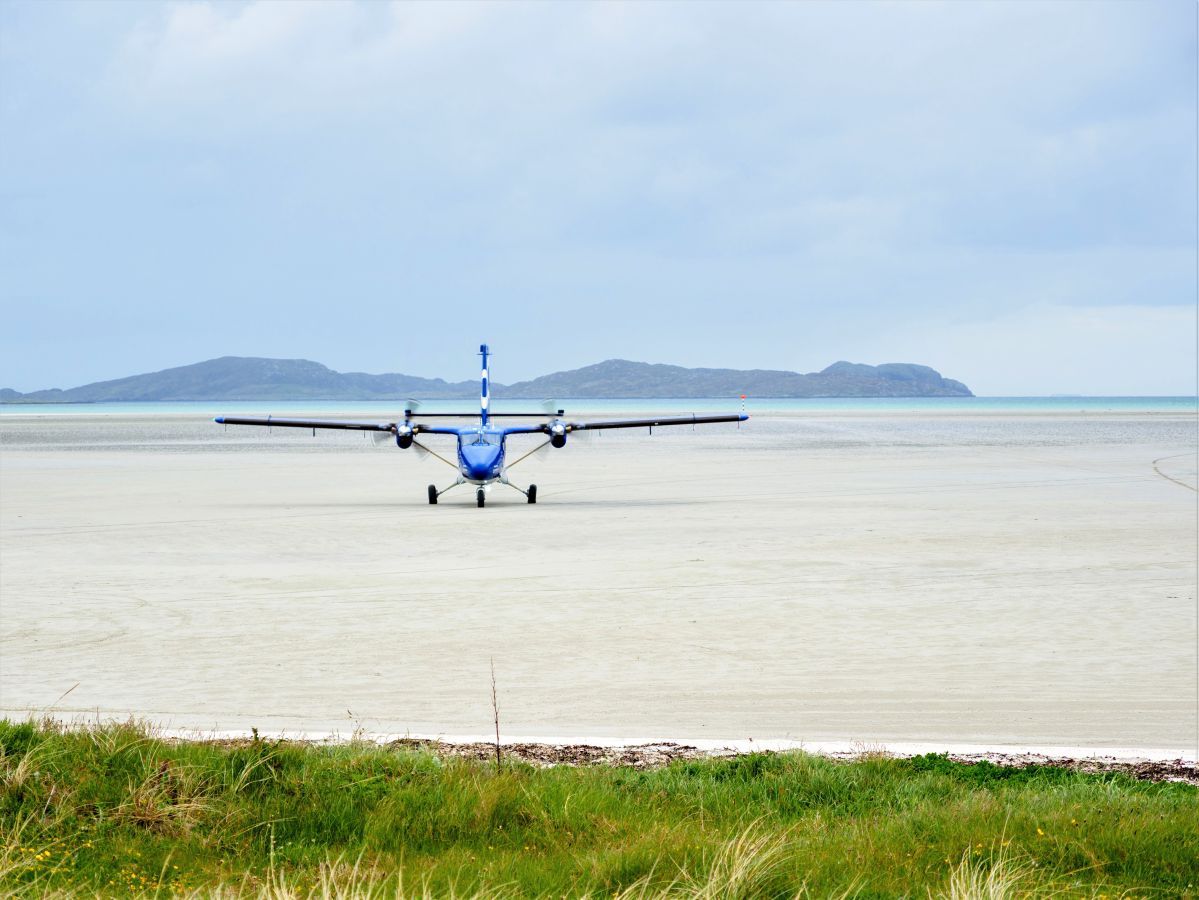
Out About Scotland Guide: Isle of Barra
Scotland’s Outer Hebrides, a stunning archipelago of ten islands, has become a must-visit tourist destination in recent years due to the rising popularity of the 185-mile Hebridean Way. The first stop on the route is the Isle of Vatersay, closely followed by Barra, also known as ‘Barradise’ or ‘Barrabados’.
Barra is a small island with beautiful white-sand beaches and lots of opportunities for walking and viewing marine wildlife. The island can be reached by ferry, but undoubtedly the most exciting option is flying into Traigh Mhor beach which is home to the world’s one and only beach airport.
The majority of visitors arrive by ferry though, with the sail from Oban taking 4 hours 45 minutes and the sail from Tiree taking 2 hours 45 minutes. Once on the island, visitors can explore by car, bicycle, or on foot, but as there are few footpaths outside of the villages, cycling is the best option for experiencing the scenery up close.
Isle of South Uist
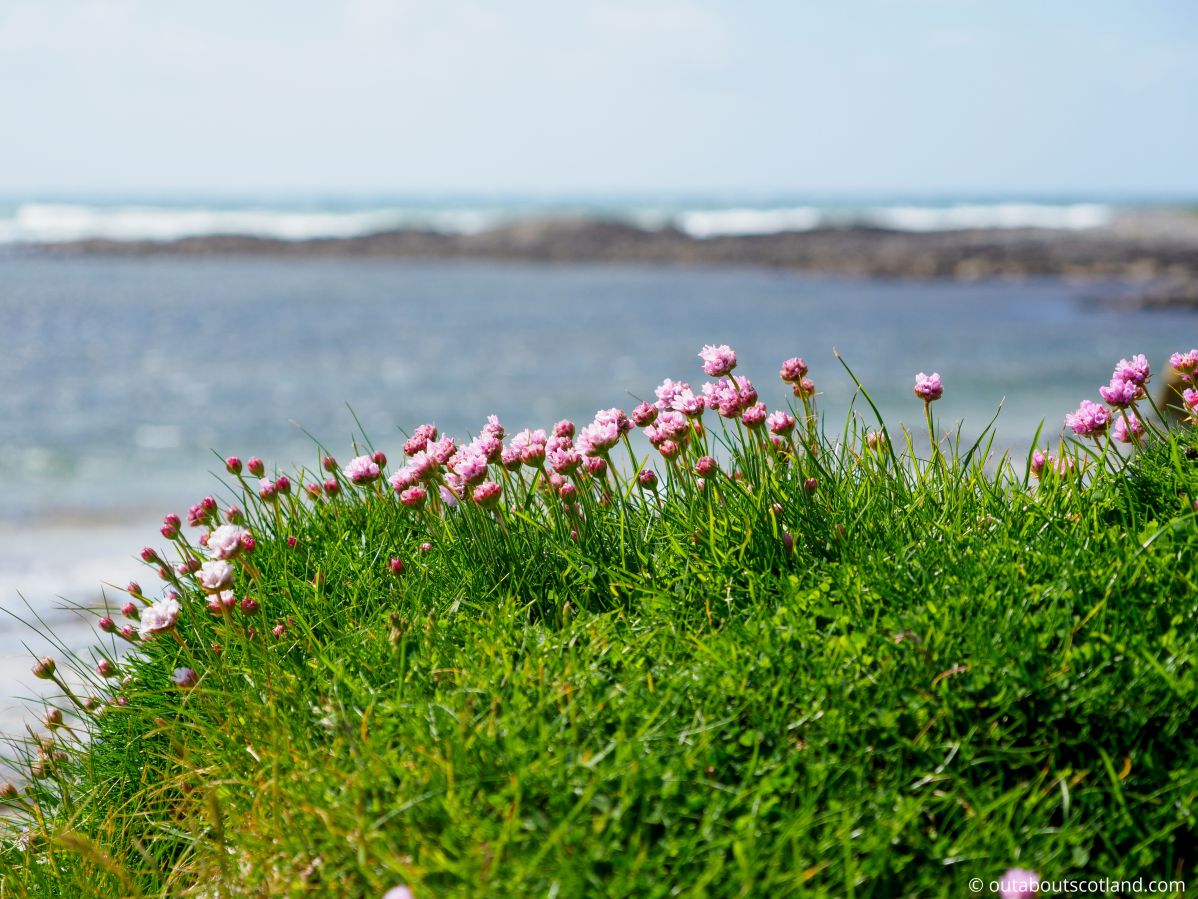
Out About Scotland Guide: South Uist
The Outer Hebrides are situated on the far northwest coast of Scotland. The largest islands, Harris and Lewis, are located to the north, while the Uist islands lie to the south.
Anyone interested in touring the Scottish islands by car will be pleased to know that the Uists – North Uist, South Uist, Benbecula, Berneray, and Ersikay – are all connected by a network of roads and causeways.
As well as making a good base to explore the rest of the Outer Hebrides, the Uists offer a wide range of activities for outdoor enthusiasts, including beautiful beaches and a mixed landscape of moorland, hills, and lochs.
There are a few tourist attractions on South Uist, including the Kildonan Centre Museum and the Loch Druidibeg National Nature Reserve, but the best reason to visit the island is to enjoy its 20-mile, almost entirely uninterrupted beach, which runs along the western coastline. Much of the beach is powder-soft golden sand, and due to its size, it’s always possible to find somewhere to relax in peace and quiet.
Isle of Coll
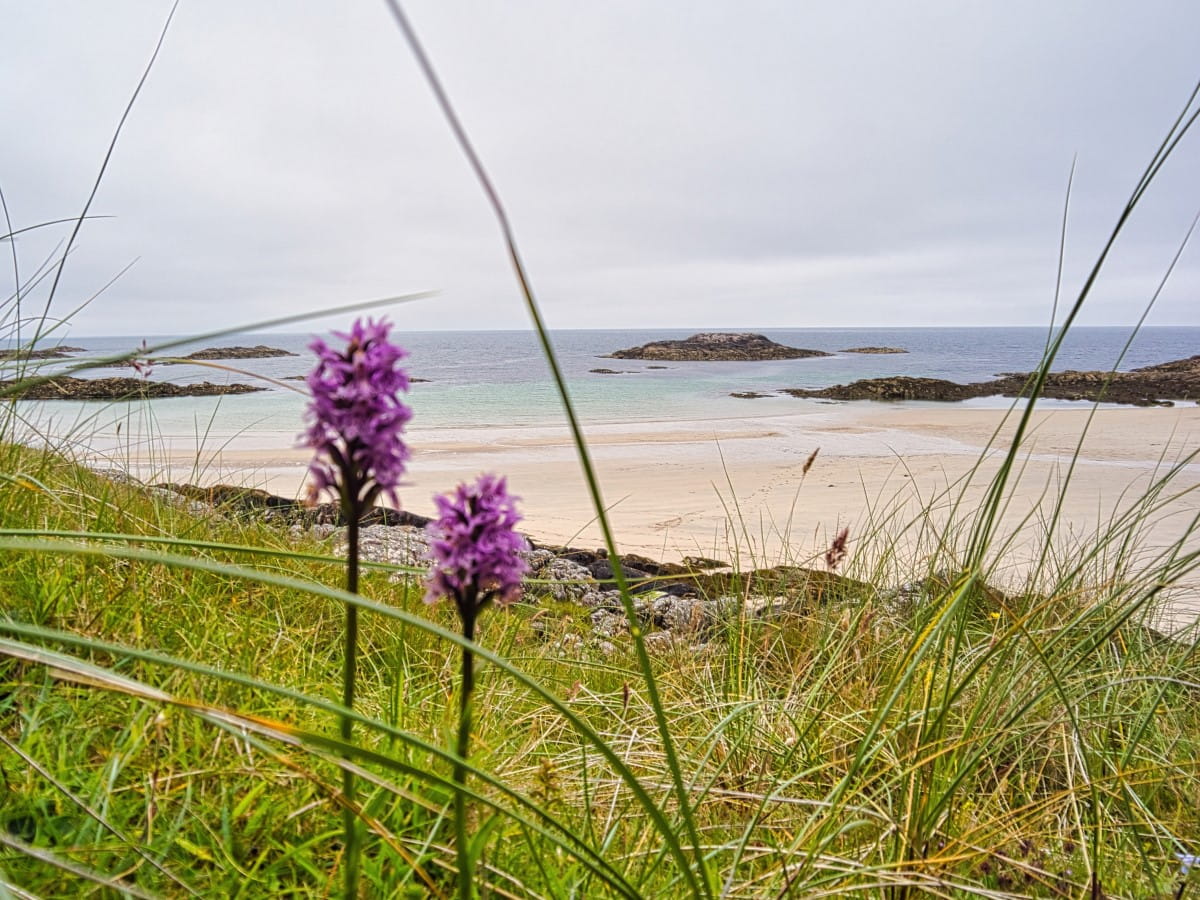
Out About Scotland Guide: Isle of Coll
Coll is a small island situated off the northern tip of Tiree, measuring 13 miles in length and just three miles in width. Although there are a few hills, it’s a superb place to take a bike, as the views along the island’s coastal roads are gorgeous from start to finish, comprising sweeping stretches of heather-covered grasslands, dozens of lochans, and a coastline that’s home to multiple secluded beaches and off-grid bays.
To get to the Isle of Coll, visitors can take a flight via Hebridean Air from Tiree or Oban, or catch a Calmac ferry (the easiest and cheapest option) from Tiree or Oban. The ferry from Tiree takes about an hour, while the crossing from Oban takes around two and a half hours.
The ferry terminal is located on the island’s eastern side, a mile from the largest settlement of Arinagour, which has a café, a community shop, and The Coll Hotel, which is well known for its superb restaurant that features panoramic windows and outdoor seating overlooking Loch Eatharna.
Wildlife watchers will have a wonderful time on Coll, as it’s a haven for puffins, basking sharks, and otters, while walkers will delight in the many trails that wind their way across the island.
There’s a narrow road on the northern half of the island that follows the western coastline, while the southern half has a ring road that winds its way inland before veering south to the two largest beaches at Feall and Crossapol bays, both of which have immaculate sand and very few tourists.
Isle of Eigg
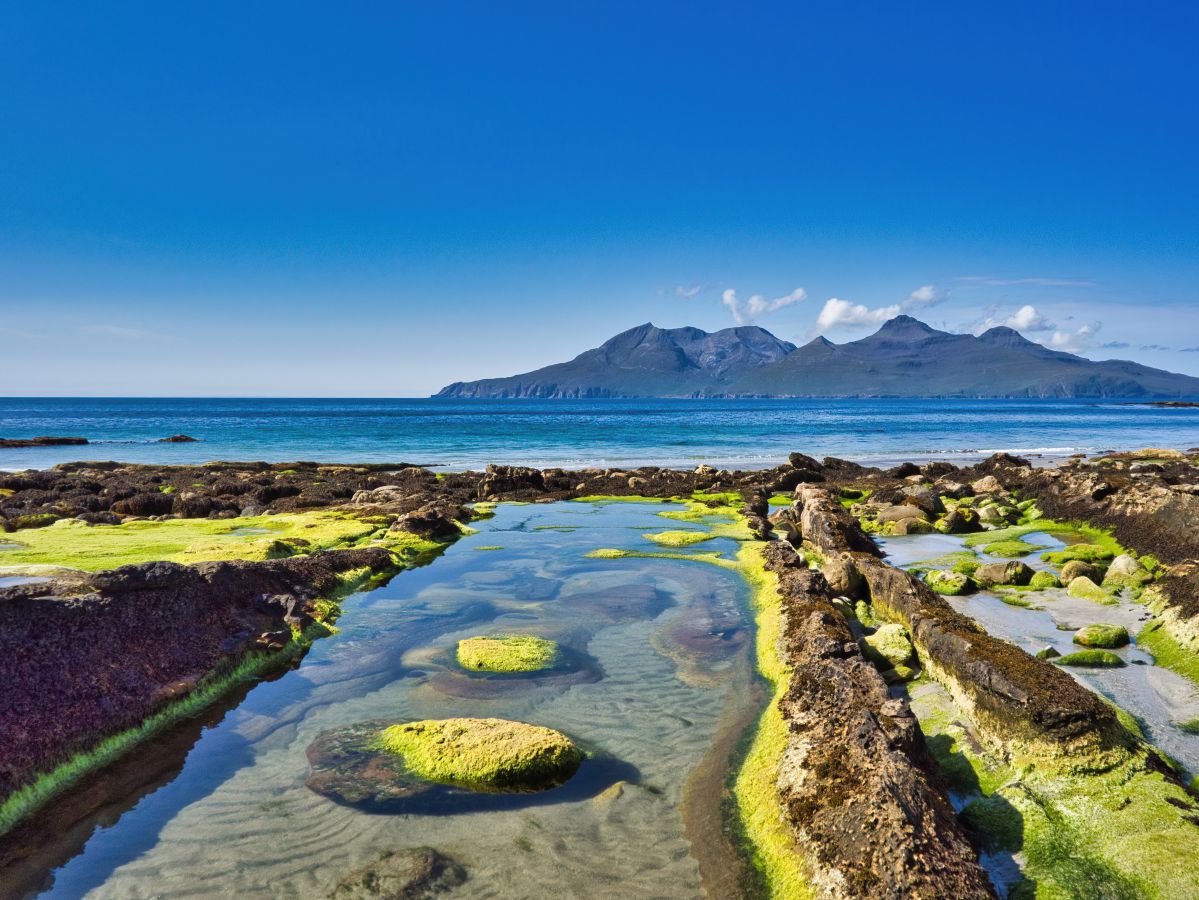
Out About Scotland Guide: Isle of Eigg
The Isle of Eigg in the Inner Hebrides is frequently described as being one of the most beautiful Scottish islands on the west coast. As part of the Small Isles, which also include Canna, Muck, and Rum, Eigg lies south of the Isle of Skye and north of the Ardnamurchan Peninsula on the mainland.
Although it’s only 9 km long and 5 km wide, Eigg boasts beautiful golden beaches, mile after mile of rocky shoreline, dense woodland, and two impressive mountain ridges to the north and south.
Of the two ridges, the southern An Sgurr is by far the most popular as it has a winding path to the summit, while the northern ridge is best known for the two beaches that lie within a flat plain below the plateau of Beinn Buidhne.
Eigg is a great destination for those seeking solitude as it’s home to just over 100 inhabitants, but this in turn means accommodation for the 10,000 annual visitors is severely limited. That being said, the crossing from Arisaig only takes 1 hour, so it’s quite easy to visit as a day tripper while renting accommodation on the mainland.
Note that cars are not allowed on Eigg, so transportation options are limited to walking or cycling, but there’s a bike rental shop next to the cafe at the island’s ferry terminal.
Isle of Harris
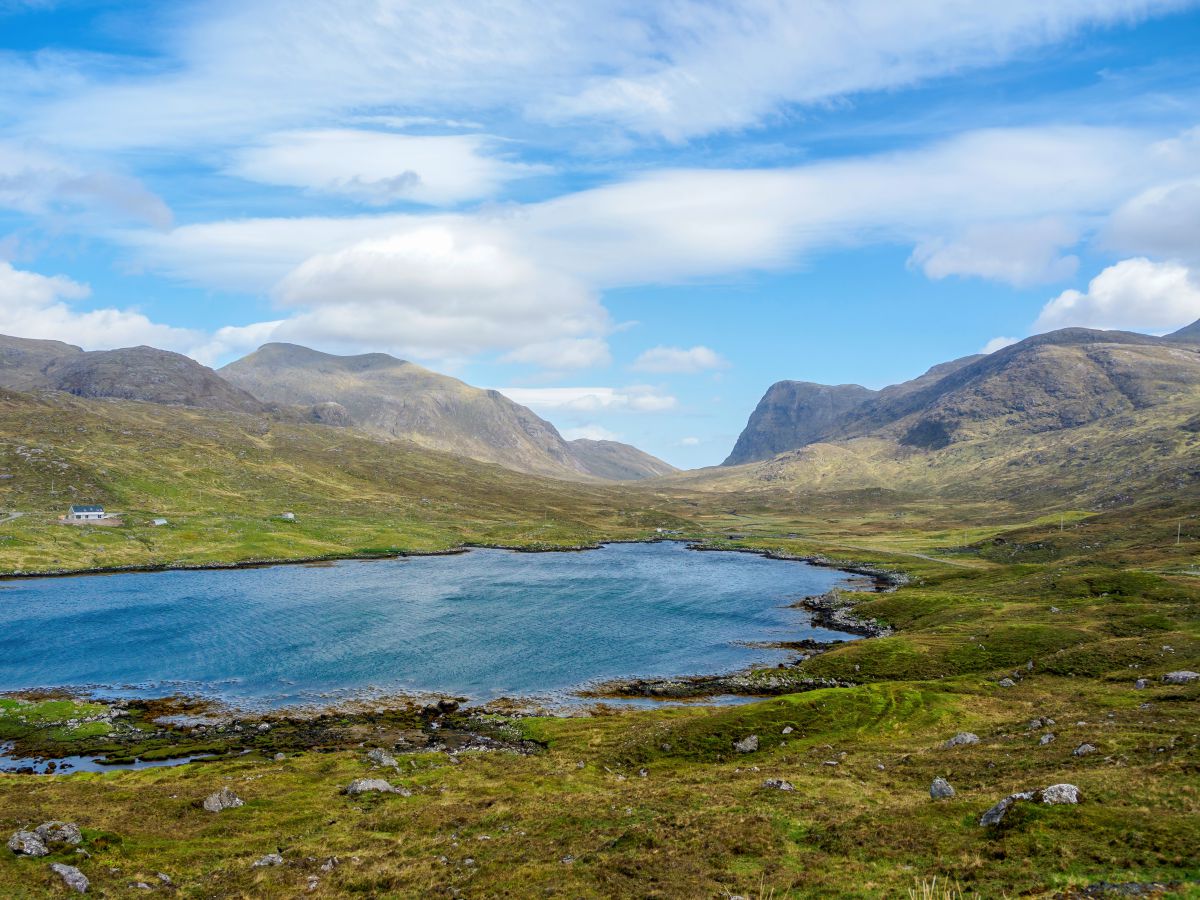
Out About Scotland Guide: Isle of Harris
A sizable mountain range divides Lewis and Harris, a single landmass at the northern end of the Outer Hebrides. Of the two islands, Harris boasts a more dramatic landscape and an undoubtedly more scenic coastline, making it a top destination for anyone who loves the great outdoors.
With regard to things to do, North Harris offers lots of hiking trails, including the famed climb to the summit of Clisham (the highest mountain in the Outer Hebrides) and a stunning trail through the Uisgneabhal Mòr, Teileasbhal, and Stuabhal mountains.
South Harris, meanwhile, is home to two of the best beaches in the Hebrides – Luskentyre and Scarista – both of which boast powdery white sand and some of the clearest turquoise waters you’re likely to see outside of the Meditteranean.
In fact, Luskentyre is so beautiful that it’s frequently voted as one of the top 10 beaches in the world, though sadly, it’s now very busy in the peak season due to the fame accrued from thousands of online travel guides.
Scarista lies to the south of Luskentyre and is just as big, though perhaps not quite as pretty. As a bonus, though, it sees far fewer tourists, so it’s better for quiet beach days.
The dramatic scenery and spectacular beaches of the Outer Hebrides have been woven into Rabbie’s 3-day Lewis & Harris small-group tour, which takes sightseers across mountains and glens to some of the Western Isle’s top attractions. Starting in Inverness, the mini-coach heads to the pretty village of Ullapool before catching a ferry to Stornoway, the capital town of the Outer Hebrides.
From there, you’ll visit a historic blackhouse (a traditional thatched island home) before exploring the mysterious Callanish Standing Stones and basking in the stunning scenery of the white sands of Luskentyre Beach.
To find out more about the Lewis, Harris, & Outer Hebrides 3-day tour, visit the Rabbie’s website.
Isle of Rum
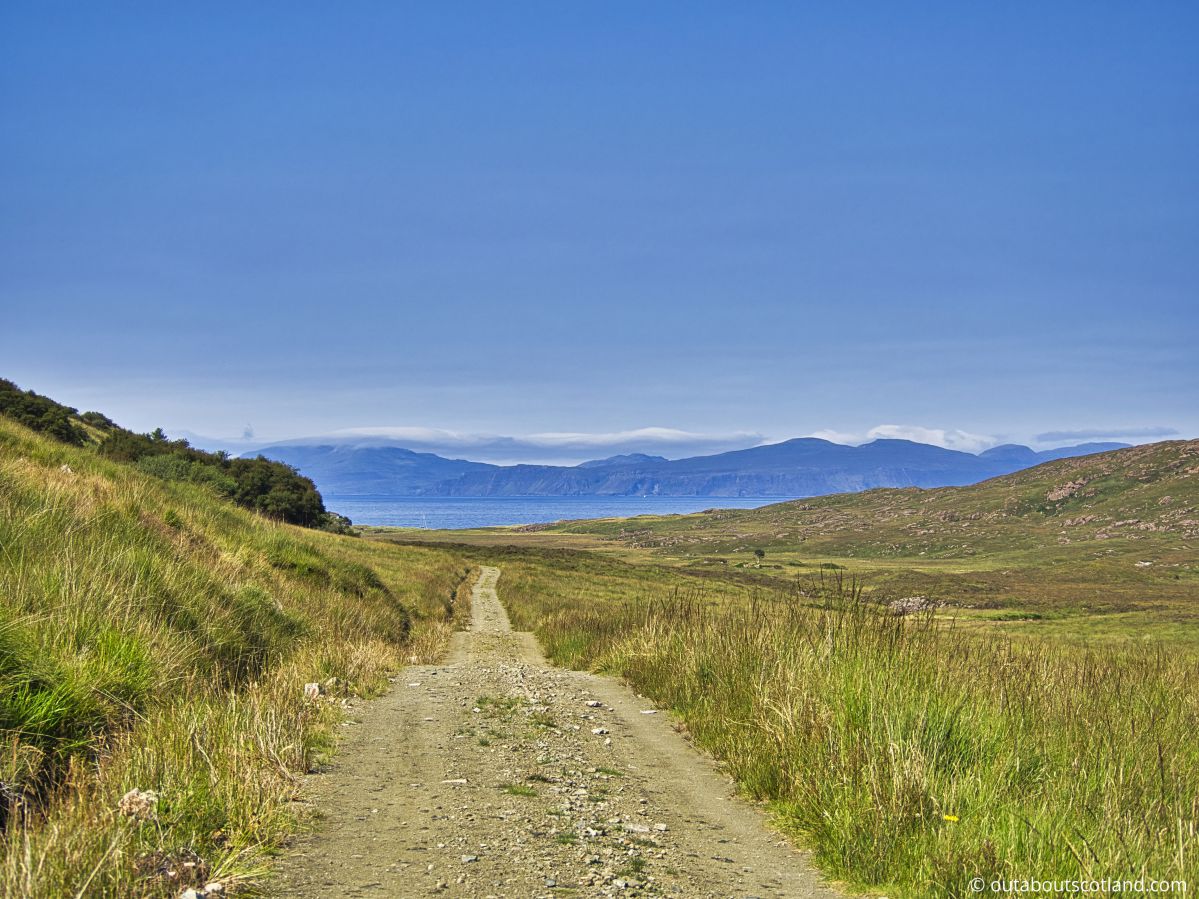
Out About Scotland Guide: Isle of Rum
Rum, the largest of the Small Isles archipelagos, is located 7 miles south of the Isle of Skye and 15 miles west of Mallaig on the mainland. The island is a National Nature Reserve managed by Nature Scot and is home to an abundance of wildlife, including golden and sea eagles, otters, seals, and red deer.
Red deer thrive on the island, which is the site of the world’s longest-running study on a wild animal population, which has been ongoing since the 1950s.
The island’s main village, Inloch, is located on the east coast and features a small community hall, a gift shop, a café, a bunkhouse, a campsite, a visitor centre, and Kinloch Castle, which is a 19th-century manor house.
The island is arguably the best Scottish island for walking due to the stunning scenery viewed from the gravel road leading out of Kinloch, which has absolutely no traffic other than the occasional ranger truck.
Getting to Rum requires an 80-minute sail from Mallaig, after which visitors have around six hours to explore the island before the ferry returns. Alternatively, overnight camping pitches can be booked in addition to accommodation at the Rum Bunkhouse.
Scottish Island Tours
If you’d like to visit Scotland’s islands on a small group tour I highly recommend Rabbie’s. This tour operator has been running since 1993 and exclusively uses mini coaches that hold a maximum of 16 people so you’re guaranteed to make new friends on each trip.
All Rabbie’s drivers are experts in Scotland, so you’ll hear a few fascinating and hilarious tales as you make your way around the most beautiful parts of the country. To book a sightseeing tour of the Scottish Islands or to find out more information about them, check out the Rabbie’s website.
Frequently Asked Questions
Are the Scottish islands worth visiting?
Scotland’s islands offer a unique blend of history, culture, and natural beauty. There are over 790 islands in total, though many are uninhabited and difficult to get to.
The islands are home to some of Britain’s most stunning landscapes and are famous for their white sandy beaches, rugged coastlines, and rolling hills. Many of the islands are rich in history and have a strong sense of community, and many see few tourists.
Whether you’re interested in history, nature, or just want to get away from it all, Scotland’s islands are a great destination.
Which Scottish island has the best beaches?
Some of the most popular beach destinations in Scotland include the Isle of Tiree and the Isle of South Uist. The Isle of Harris and the Isle of Arran also have some beautiful beaches.
If you’re looking for white sand and crystal-clear waters, you might want to consider visiting the beaches on the Western Isles, such as Luskentyre on Harris or Traigh Mhor on Barra. Alternatively, Crossopol on Tiree is great for water sports, while Gruinart on Islay is enormous and still relatively unknown by tourists.
Which is the warmest Scottish island?
The Isle of Arran, located off the west coast of Scotland, is often considered to be the warmest of the Scottish islands.
Arran has a more temperate climate than many other parts of Scotland due to its location in the Gulf Stream, which helps to keep the island warm and less prone to frost. Other Scottish islands that have a relatively mild climate and a high number of sunshine hours include the Isle of Coll and the Isle of Tiree.
What is the best time of year to visit the Outer Hebrides?
The summer months of June through August are the busiest and most popular times to visit the Outer Hebrides, as the weather is generally warm and dry, making it an ideal time for outdoor activities such as hiking and fishing.
However, the Outer Hebrides are also beautiful in the spring and autumn, when the weather is cooler and the crowds are fewer. Ultimately, the best time to visit the Outer Hebrides is up to you and what you hope to experience during your visit.

